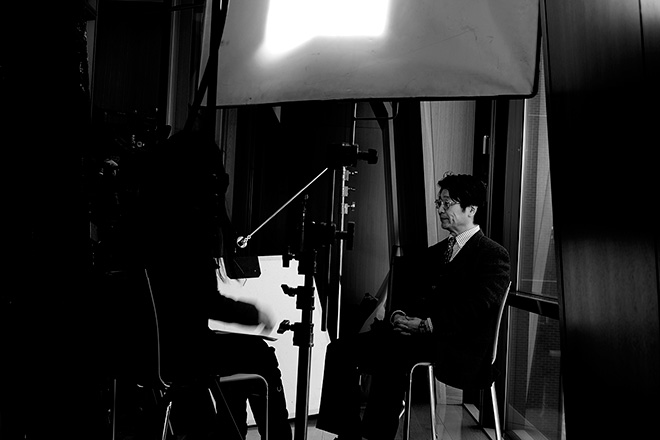Complex Risk Management
Kazuo Furuta / Professor, School of Engineering, the University of Tokyo

Q:What is the thinking behind the idea of resilience?
Furuta: In Japanese, “resilience” is dan in dansei or danryoku, which is a literal translation. To explain resilience in more easily understandable terms, its meaning is something like “recovery property” or “recuperative power.”
Initially, “resilience” came into use, a long time ago, as a technical term in the field of ecology. In ecology, it was born out of the concept of an organism’s ability to avoid extinction, and adapt and survive in its environment when that environment underwent some form of change. However, “resilience” was subsequently adopted by other fields such as disaster prevention, in which it is used in the context of various critical situations, such as an earthquake, to denote a system’s ability to avoid failure and control any incoming damage that might occur or to quickly recover from that damage.
In my own field, which is system safety, and speaking particularly about those safety problems that affect people or organizations, the existing mechanically oriented fields of safety engineering and reliability engineering were not very effective in their applications. Thus, this notion of resilience emerged as an entirely new concept, and the word began to be used in flexibility of organizations and allied fields. This was a completely new way of thinking about safety; this is how the concept of resilience came to garner the attention it has.
Q:Recently, is there an example of something that has become easier to understand by considering it using a resilience-based model?
Furuta: The word “resilience” was used in various contexts in Japan as a result of the Great East Japan Earthquake of March 11, 2011. This tragedy, together with the subsequent Fukushima nuclear disaster and the situation worsening to what it became, showed a situation that was in a sense beyond the scope of prediction and a situation where damage was unavoidable. Alright, there are situations where damage is unavoidable, but then how can we go about dealing quickly with that damage? That is the sort of context from which resilience-based thinking has emerged.
You could say that resilience engineering came about from the idea of creating social systems, which can withstand a type of shock and can deal with even those emergency situations in which the occurrence of damage is unavoidable.

Q:By adopting strong political policy and raising issues concerning compound risks, and also by nurturing this workforce that will deal with such policy, how do you think Japan or the University of Tokyo will be able to contribute to society?
Furuta: With regards to resilience, well, I have only been speaking about disaster response, but that is certainly not the only area where resilience is relevant. There are much less drastic environmental changes, e.g., the extremely gradual changes in environments such as the world economy or global society. Thus, resilience relates to issues such as how our society will deal with solving these problems as well. To take a specific example, when facing a gradual change such as global warming, we must ask, how do we best respond to recover and adapt moving forward? Such issues are also major topics in resilience.
I am of the personal belief that extremely specialized and capable people, who have adopted this commanding view when dealing with the resolution of all of society’s problems, will be able to flourish in all sorts of fields.

Q:When talking about resilience engineering, what are the strong points of the University of Tokyo or Japan? How do they match up against the rest of the world?
Furuta: While there is the breadth of the University of Tokyo’s curriculum, resilience is a field that requires an extremely interdisciplinary treatment.
In that respect, the University of Tokyo offers schools of an integrated nature. This GSDM, for example, brings various university’s graduate programs into the equation. Moreover, by virtue of being able to seek knowledge that spans various disciplines, I believe there is significant merit in the University of Tokyo conducting research into fields such as resilience.
Q:In the field of resilience under the Global Leadership Education Program, what type of students are you recruiting, and how would you like them to learn and change? What type of people would you like to develop?
Furuta: This is a type of education that other engineers and I have been using for some time now, because it is so interdisciplinary, or what I would call a more interdisciplinary major. What we require are students who will not get caught up with these existing, crab trap-like, preconceived notions such as the dichotomy between sciences and humanities. These are the type of people that will probably be in demand from here on.
While that may be true, however… how shall I put this? I do not mean to imply that we need people who possess broad and shallow knowledge, but rather people with an extremely high level of specialization in a particular field of study will inevitably be necessary. We need people who possess this specialization—but who also possess a flexible enough perspective not to get trapped in it—and who also have a flexible set of values. Thus, students and people with such characteristics will be required from here on.
I am in the engineering field; thus, in particular, examining things from the side of the sciences, I would like students to approach science and technology with a greater interest in things such as the final implementation of its fruits into society and the resolution of social challenges.
